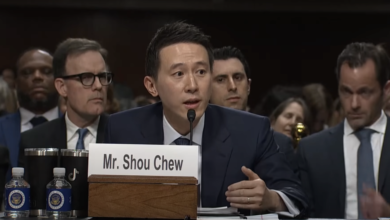On Feb.13, the Democratic People’s Republic of Korea, or North Korea, made an initial agreement based on negotiations with five other nations—United States, China, South Korea, Japan and Russia. The agreement stipulates that North Korea will shut down operations at the Yongbyong nuclear power plant within 60 days and allow U.N. inspectors to enter the country within 30 days.
In return, North Korea would be given 50,000 tons of heavy fuel oil for stopping operations at Yongbyong, and then an
|
The negotiated agreement requires the United States to reverse the freeze on North Korean bank accounts in Macao within 30 days.
Under the agreement, both the United States and Japan are to begin bilateral negotiations about normalizing diplomatic relations with North Korea.
The United States also is required to make moves to remove North Korea from its list of terrorist states. The six-party talks are set to continue on March 19.
Nuclear talks
In a statement, President Bush said, “These talks represent the best opportunity to use diplomacy to address North Korea’s nuclear programs. They reflect the common commitment of the participants to a Korean peninsula that is free of nuclear weapons.”
The idea of a so-called nuclear free Korean peninsula is a much touted line of the Bush administration. It is sheer irony for the only country ever to have used nuclear weapons—in the August 1945 bombings of Hiroshima and Nagasaki—to be berating another country for the production of small number of weapons.
Because of the capitalist media’s intense propaganda against North Korea, the issue must be viewed not from the narrow perspective of one set of six-party talks, but rather from an understanding of the historic and political animosity of the U.S. ruling class toward North Korea.
North Korea poses no danger to the United States. Rather the United States poses the greatest threat to North Korea and to the people of the Korean Peninsula.
The United States has invested seven trillion dollars to develop nuclear weapons. The U.S. war machine is developing a new generation of more “convenient” nuclear weapons.
The U.S. government has consistently threatened North Korea’s existence through diplomatic means, economic sanctions and the threat of war.
And the United States remains at war with North Korea. The U.S. government has never signed a peace treaty declaring an end to the Korean War, despite the fact that formal hostilities ceased on July 27, 1953. Thirty-seven thousand U.S. troops are stationed at North Korea’s southern border.
History of U.S. aggression
In the capitalist media, and some social democratic circles, the initial agreement that may be emerging from the negotiations has been hailed as a result of the Bush administration pursuing a diplomatic policy of negotiations rather than one of aggression—its most visible way of operating. This, however, misses the basic point and ignores the factual record of U.S. policy toward North Korea.
When the Bush administration first took office, one of its top priorities was to torpedo the expected normalization of relations or at least the thaw in antagonistic relations between North Korea and the United States. This new posture was evident in the last year of the Clinton administration.
Between June 14 and 15, 2000, former South Korean president Kim Dae Jung met with North Korean leader Kim Jung Il in a historic summit in Pyongyang. This meeting would not have taken place without U.S. approval because of the nature of the U.S.-South Korea relationship. South Korea has long served as a puppet to the dominant imperialist power.
Then, Secretary of State Madeline Albright, the highest U.S. official ever to visit North Korea, went to Pyongyang in fall 2000. The suspension of North Korea’s nuclear program followed. These events pointed to the potential for a normalization of relations, which was beneficial to North Korea.
When Bush took office, he immediately signaled that there would be no such thaw in relations and resumed the unprovoked demonization of North Korea’s leadership.
In his second state of the union address, he declared North Korea to be part of the “axis of evil,” along with Iraq and Iran.
The heightened threats against Iraq and the subsequent invasion made the label’s gravity clear. Although North Korea has desired improved relations, the leadership saw the handwriting on the wall.
They suspended participation in the Treaty on the Non-Proliferation of Nuclear Weapons and embarked on what is their completely legitimate right—to accumulate weapons as a defensive tactic against a hyper-aggressive, highly armed enemy. The U.S. government possesses over 10,000 nuclear warheads.
This triggered a wave of economic and political sanctions against North Korea, which has refused to back down.
North Korea announced itself as a nuclear power on Oct. 4, 2006, after testing a bomb. Washington was unable to attack North Korea because it was, and is, held down by the Iraqi resistance.
North Korea has shifted the balance of forces within the narrow contact of negotiations.
Workers and oppressed people reap no benefit by siding with the U.S. imperialist ruling class in its aggression against North Korea—or any oppressed nation. We benefit greatly from showing solidarity, based on a clear understanding of history, with those oppressed nations that defend themselves against imperialism.
Rather than joining the ruling class in calling for a “nuclear free Korean peninsula,” we should intensify our call to disarm the most dangerous nuclear power that exists—the Pentagon.
Click here to read more from the PSL on North Korea.





